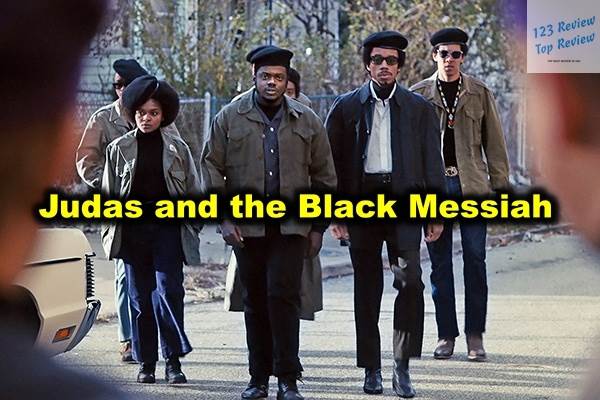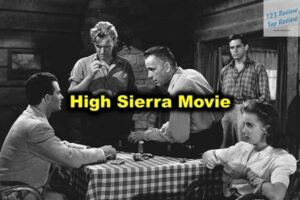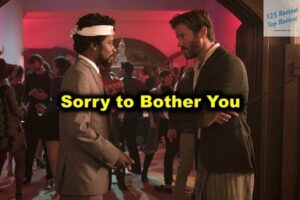Directed by Shaka King and released in 2021, the Judas and the Black Messiah film presents the gripping true story of Fred Hampton, the young and charismatic leader of the Illinois chapter of the Black Panther Party, and the FBI informant, William O’Neal, who ultimately betrays him. With its powerful performances, historical accuracy, and resonant themes, the film has left a lasting impact on audiences and critics alike. It stands as both a tribute to the life and legacy of Hampton and a stark reminder of the systemic oppression faced by Black activists in the United States.
Overview of the Film
Release and Reception
“Judas and the Black Messiah” was released on February 12, 2021, in a world that had been gripped by social justice movements and a heightened awareness of racial inequality. The timing of its release, during Black History Month, was particularly poignant, as the film’s themes resonated deeply with ongoing conversations about race, police brutality, and the legacy of the civil rights movement. The film was released both in theaters and on the HBO Max streaming platform, a dual-release strategy born out of the COVID-19 pandemic that allowed it to reach a wide audience despite the challenges of limited theater capacities.

From the moment it premiered at the Sundance Film Festival, “Judas and the Black Messiah” was met with critical acclaim. Audiences and critics alike praised the film for its unflinching portrayal of historical events, its intense and nuanced performances, and its ability to draw connections between the past and the present. The film’s success was not just a testament to its artistic merits but also to its relevance in a time of renewed activism and reflection on America’s racial history. Financially, it performed admirably, grossing over $7 million worldwide—a significant achievement given the constraints of the pandemic era.
Director and Writing Team
The creative force behind “Judas and the Black Messiah” is Shaka King, a director known for his ability to craft narratives that are both intimate and expansive. King, who made his directorial debut with “Newlyweeds” in 2013, brings a unique vision to the film, blending the intensity of a political thriller with the emotional depth of a character study. His direction in “Judas and the Black Messiah” is marked by a careful attention to detail, a deep respect for the historical material, and a commitment to telling the story with authenticity and nuance.
The screenplay, co-written by King and Will Berson, is a masterclass in balancing historical accuracy with dramatic storytelling. The script was further shaped by Keith and Kenny Lucas, the comedic duo known as The Lucas Brothers, who originally conceived the idea for the film. Their input helped ensure that the narrative stayed true to the lived experiences of those involved while also making the story accessible to contemporary audiences. The writing team’s collaborative effort resulted in a screenplay that is both powerful and poignant, capturing the complexities of the characters and the era in which they lived.
Historical Context
To fully appreciate “Judas and the Black Messiah,” it is essential to understand the historical context in which the events of the film take place. The late 1960s in America was a time of profound social upheaval. The civil rights movement had achieved significant victories, but the struggle for racial equality was far from over. The Vietnam War was raging, and opposition to it was growing, particularly among young people and marginalized communities. The Black Panther Party, founded in 1966 by Huey P. Newton and Bobby Seale, emerged as one of the most influential and controversial organizations of this era.
The Black Panthers advocated for self-defense, community control, and revolutionary change. They organized programs to address the needs of Black communities, such as free breakfast programs for children and health clinics, while also challenging police brutality and systemic racism. Fred Hampton, who became the chairman of the Illinois chapter of the party, was a particularly effective leader. He was known for his fiery oratory, his ability to unite people across racial and socioeconomic lines, and his dedication to the cause of Black liberation.
However, the Black Panther Party was viewed as a threat by the U.S. government, particularly by the FBI under the leadership of J. Edgar Hoover. Hoover saw the Panthers as the greatest threat to internal security and launched COINTELPRO (Counter Intelligence Program), a covert operation aimed at disrupting and dismantling Black activist groups. It was within this context of government surveillance, infiltration, and repression that the events of “Judas and the Black Messiah” unfold, making the film not just a historical drama but also a commentary on state power and resistance.
Key Characters
Fred Hampton
Fred Hampton, portrayed with electrifying intensity by Daniel Kaluuya, is the central figure in “Judas and the Black Messiah.” Born in 1948 in Chicago, Hampton was a gifted student and a natural leader from a young age. He joined the NAACP before becoming involved with the Black Panther Party, where he quickly rose through the ranks due to his exceptional leadership skills and his ability to articulate the struggles and aspirations of Black Americans. Hampton’s vision extended beyond the Black community; he sought to build a multiracial coalition of oppressed people, famously working with groups like the Young Lords and the Young Patriots Organization.
In the film, Kaluuya embodies Hampton’s charisma, intelligence, and unwavering commitment to the cause. His performance captures the complexity of Hampton’s character: his compassion and empathy for his community, his strategic mind, and his ability to inspire and mobilize others. The film also delves into Hampton’s personal life, particularly his relationship with Deborah Johnson, showing the human side of a man often mythologized as a revolutionary figure. Kaluuya’s portrayal earned him widespread acclaim, including an Academy Award for Best Supporting Actor, as he brought to life the passion and tragedy of a leader whose life was cut short at the age of 21.
William O’Neal
LaKeith Stanfield delivers a haunting and deeply conflicted performance as William O’Neal, the man who betrays Fred Hampton. O’Neal was a small-time criminal who was coerced by the FBI into becoming an informant. Faced with the threat of prison, he agreed to infiltrate the Black Panther Party and provide information on Hampton’s activities. O’Neal’s story is one of profound internal conflict; he is torn between his growing admiration for Hampton and the fear of the consequences he would face if he refused to cooperate with the FBI.
Stanfield’s portrayal of O’Neal is nuanced and layered, capturing the complexity of a man who is both a victim and a perpetrator. The film presents O’Neal as a tragic figure, someone who is caught in a web of deception and manipulation, yet who ultimately makes the fateful decision to betray a man he comes to respect. Stanfield’s performance is marked by a deep sense of vulnerability, as he conveys the emotional toll that O’Neal’s double life takes on him. The film’s portrayal of O’Neal adds a layer of psychological depth to the narrative, making the story of betrayal not just a political act, but a deeply personal tragedy.
Supporting Roles
The supporting cast of “Judas and the Black Messiah” is filled with standout performances that add depth and richness to the film’s portrayal of the Black Panther Party and the broader community around Fred Hampton. Dominique Fishback plays Deborah Johnson, Hampton’s partner and the mother of his child. Fishback’s performance is both tender and powerful, capturing the strength and vulnerability of a woman who is deeply committed to the cause but also profoundly affected by the personal sacrifices it demands. Her scenes with Kaluuya are some of the film’s most emotionally resonant, as they depict the love and solidarity that existed alongside the struggle.
Jesse Plemons takes on the role of Roy Mitchell, the FBI agent who manipulates O’Neal into becoming an informant. Plemons brings a chilling detachment to the character, portraying Mitchell as a man who is both calculating and morally ambivalent. Mitchell’s relationship with O’Neal is one of control and coercion, reflecting the broader dynamics of power and oppression that the film explores. Plemons’ performance adds a layer of menace to the film, as Mitchell represents the cold, impersonal force of the state that ultimately leads to Hampton’s demise.
Other notable performances include Martin Sheen as J. Edgar Hoover, who is depicted as the embodiment of institutional racism and paranoia, and Ashton Sanders as Jimmy Palmer, a young Panther who embodies the hope and idealism of the movement. The supporting cast, through their diverse portrayals, contributes to a rich tapestry of characters that reflect the complexity and diversity of the Black Panther Party and its impact on American society.
Themes and Motifs
Betrayal and Loyalty
The theme of betrayal is at the heart of “Judas and the Black Messiah,” driving the film’s narrative and its emotional impact. William O’Neal’s betrayal of Fred Hampton is not just a personal act of treachery but a reflection of the broader dynamics of power, coercion, and manipulation. The film explores the factors that lead O’Neal to betray Hampton, including the fear of imprisonment, the desire for self-preservation, and the pressure exerted by the FBI. It also delves into the psychological consequences of betrayal, as O’Neal becomes increasingly haunted by his actions and the knowledge that he played a role in the death of a man he admired.
Loyalty, in contrast, is depicted through the relationships between the members of the Black Panther Party and their commitment to the cause. Hampton’s loyalty to his community and his ideals is unwavering, even in the face of overwhelming odds. The film shows how loyalty can be both a source of strength and a burden, as characters are forced to make difficult choices in the context of an oppressive system. The tension between betrayal and loyalty is a central motif in the film, reflecting the moral and ethical dilemmas faced by individuals in a time of political turmoil.
Power and Oppression
“Judas and the Black Messiah” is also a powerful exploration of power and oppression, particularly in the context of state violence and resistance. The film depicts the Black Panther Party as a response to systemic racism and police brutality, showing how the party sought to empower Black communities and challenge the status quo. Hampton’s speeches and actions are portrayed as a direct challenge to the existing power structures, and his assassination is shown as a calculated move by the state to silence a powerful voice for change.
The film also explores the ways in which the state exerts its power through surveillance, infiltration, and violence. The FBI’s COINTELPRO program is depicted as a ruthless and amoral operation designed to destroy Black activists and organizations. The film does not shy away from showing the brutality of the state’s actions, from the psychological manipulation of O’Neal to the violent raid that leads to Hampton’s death. Through its portrayal of power and oppression, “Judas and the Black Messiah” raises important questions about the role of the state in suppressing dissent and the lengths to which it will go to maintain control.
Race and Identity
Race and identity are central themes in “Judas and the Black Messiah,” as the film explores the experiences of Black Americans in a society structured by racial inequality. The film portrays the Black Panther Party as an expression of Black identity and pride, showing how the party sought to redefine what it meant to be Black in America. Hampton’s vision of a multiracial coalition is also a key aspect of the film, reflecting the idea that the struggle for justice is not limited to one race or group, but is a universal fight for human rights.
The film also delves into the internal conflicts faced by Black characters, particularly O’Neal, who is torn between his identity as a Black man and his role as an informant for a government that oppresses his people. The tension between individual identity and collective struggle is a recurring theme, as characters grapple with their place in a society that seeks to divide and control them. Through its exploration of race and identity, “Judas and the Black Messiah” offers a nuanced and complex portrayal of the Black experience in America.
Cinematic Techniques
Visual Style
The visual style of “Judas and the Black Messiah” is marked by a careful attention to period detail and a deliberate use of color and composition to convey mood and meaning. The film’s cinematography, by Sean Bobbitt, captures the grit and intensity of the late 1960s, using a muted color palette that reflects the somber tone of the story. The use of handheld cameras and natural lighting gives the film a sense of immediacy and realism, immersing the audience in the world of the Black Panther Party and the struggles they faced.
The film also makes use of visual symbolism to underscore its themes. For example, the recurring motif of the Judas kiss—a symbol of betrayal—is echoed in the way characters are framed and positioned in relation to each other. The contrast between light and shadow is used to highlight the moral ambiguity of the characters and the choices they make. The visual style of “Judas and the Black Messiah” is not just a backdrop for the story, but an integral part of the film’s storytelling, enhancing the emotional and thematic depth of the narrative.
Soundtrack and Score
The soundtrack and score of “Judas and the Black Messiah” play a crucial role in setting the tone and enhancing the emotional impact of the film. The score, composed by Mark Isham and Craig Harris, blends traditional orchestration with elements of jazz and soul, reflecting the cultural and political context of the era. The music is used to underscore key moments in the film, from the intensity of Hampton’s speeches to the tension of O’Neal’s interactions with the FBI.
In addition to the original score, the film features a selection of songs that capture the spirit of the time, including tracks by artists such as Marvin Gaye, Nina Simone, and Curtis Mayfield. These songs not only evoke the sound of the 1960s but also serve as a commentary on the film’s themes of resistance, empowerment, and social justice. The use of music in “Judas and the Black Messiah” is not just a stylistic choice, but a way of connecting the historical narrative to the cultural legacy of Black music and its role in the struggle for civil rights.
Editing and Pacing
The editing of “Judas and the Black Messiah,” by Kristan Sprague, is instrumental in building the film’s tension and maintaining its momentum. The film is paced deliberately, with a careful balance between moments of quiet reflection and intense action. The editing effectively conveys the sense of inevitability that hangs over the story, as the audience is drawn into the unfolding tragedy of Hampton’s betrayal and assassination.
The use of cross-cutting between different characters and events creates a sense of interconnectedness, showing how the actions of one character ripple out to affect others. This technique is particularly effective in building suspense, as the film moves between O’Neal’s infiltration of the Panthers and the FBI’s planning of the raid. The editing also emphasizes the duality of the characters, particularly O’Neal, by juxtaposing his interactions with the Panthers and his meetings with the FBI. Through its editing and pacing, “Judas and the Black Messiah” creates a compelling and immersive narrative that keeps the audience engaged from beginning to end.
Conclusion
“Judas and the Black Messiah” is a powerful and thought-provoking film that offers a searing examination of a dark chapter in American history. Through its compelling performances, meticulous direction, and resonant themes, the film not only tells the story of Fred Hampton and William O’Neal but also speaks to the broader struggles for justice, equality, and human rights that continue to this day. It is a film that challenges the audience to reflect on the nature of power, the cost of betrayal, and the enduring legacy of those who dare to resist oppression.
As a work of cinema, “Judas and the Black Messiah” stands as a testament to the power of storytelling to illuminate the past and inspire change in the present. It is a film that will be remembered not only for its artistic achievements but also for its contribution to the ongoing conversation about race, identity, and the fight for justice in America.





